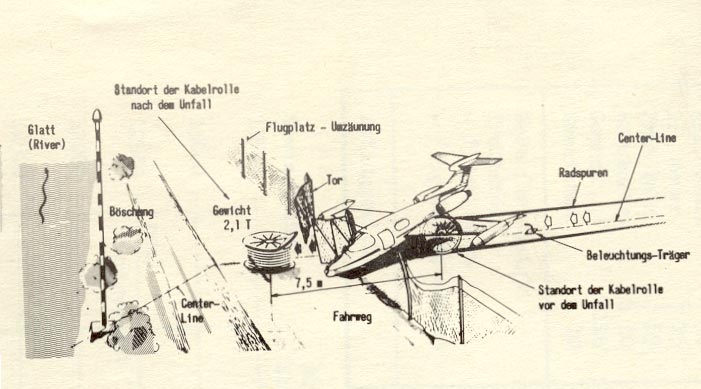Zone
Crash of a Learjet 35A in Lyon: 2 killed
Date & Time:
May 2, 2000 at 1439 LT
Registration:
G-MURI
Survivors:
Yes
Schedule:
Farnborough - Nice
MSN:
35-646
YOM:
1988
Flight number:
NEX4B
Crew on board:
2
Crew fatalities:
Pax on board:
3
Pax fatalities:
Other fatalities:
Total fatalities:
2
Captain / Total hours on type:
2113.00
Copilot / Total hours on type:
850
Aircraft flight hours:
4291
Aircraft flight cycles:
3637
Circumstances:
The aircraft departed Farnborough Airport at 11h22 on a charter flight to Nice with two pilots and three passengers on board, among them the F1 driver David Coulthard. At 12h22, cruising at FL390, the left engine of the aircraft suffered a failure. The crew shut down and began to descend. They declared an emergency and asked to fly to the nearest aerodrome with a runway longer than one thousand six hundred metres. Lyon-Satolas Airport, located about 62 NM away left abeam of the aircraft, was proposed. The descent with one engine shut down towards Lyon-Satolas was undertaken under radar guidance, at a high speed and with a high rate of descent. At 12h35, the pilot stabilised the aircraft at 3,000 feet, intercepted the runway 36L ILS and was cleared to land. The final was started at 233 knots according to radar data and the slow down progressive. At 12h36 min 45 s, the flaps were extended to 8°. According to the radar data, the aircraft was then at 2,400 feet, 4,4 NM from the runway threshold and at a speed of 184 knots. At 12h36 min 58 s, the landing gear was extended. At 12h37 in 03 s, the flaps were set to 20°. According to the radar data, the aircraft was then at 2,100 feet, 3,5 NM from the runway threshold at a speed of 180 knots. No malfunctions or additional problems were announced to the ATC by the crew during the final approach. At 12h38 min 08 s, the copilot told the captain that the aircraft was a little low. According to the radar data, the aircraft was then at 1,100 feet, 0,9 NM from the runway threshold at a speed of 155 knots. At 12h38 min 17 s, he repeated his warning and announced a speed 10 knots above the approach reference speed. At 12h38 min 22 s, the copilot again stated that the aircraft was a little low on the approach path and immediately afterwards asked the captain to increase the thrust. According to the radar data, the aircraft was then at 900 feet, 0,1 NM from the runway threshold at a speed of 150 knots. At 12h38 min 24 s, the captain indicated that he was losing control of the aircraft. The aircraft, over the runway threshold, banked sharply to the left, touched the ground with its wing, crashed and caught fire. Both pilots were killed while all three passengers evacuated with minor injuries.
Probable cause:
The accident resulted from a loss of yaw and then roll control which appears to be due to a failure of monitor flight symmetry at the time of the thrust increase on the right engine. The hastiness exhibited by the captain, and his difficulty in coping with the stress following the engine failure, contributed to this situation.
Final Report:


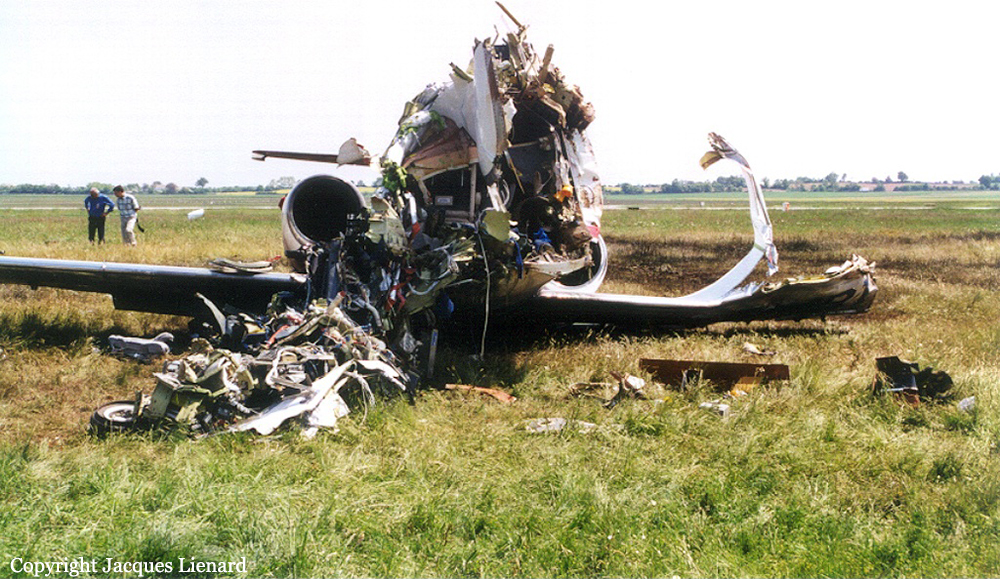
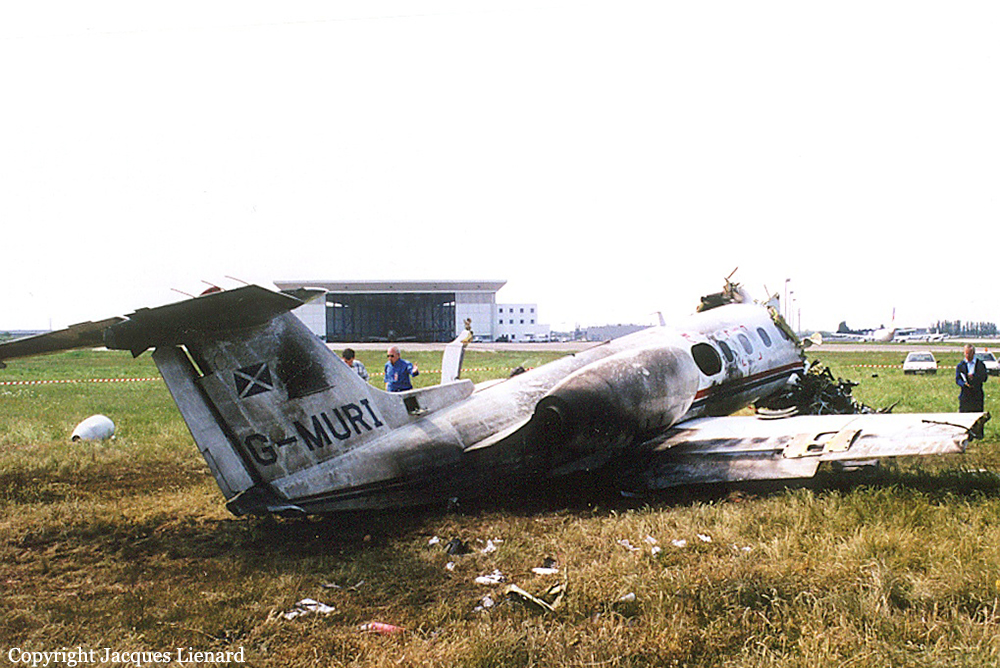

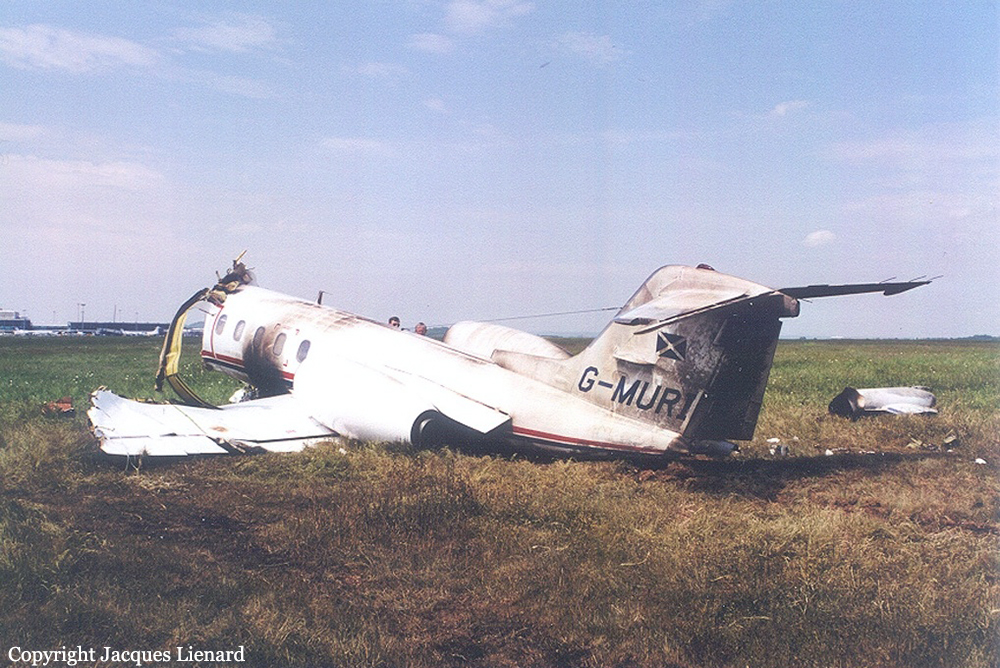
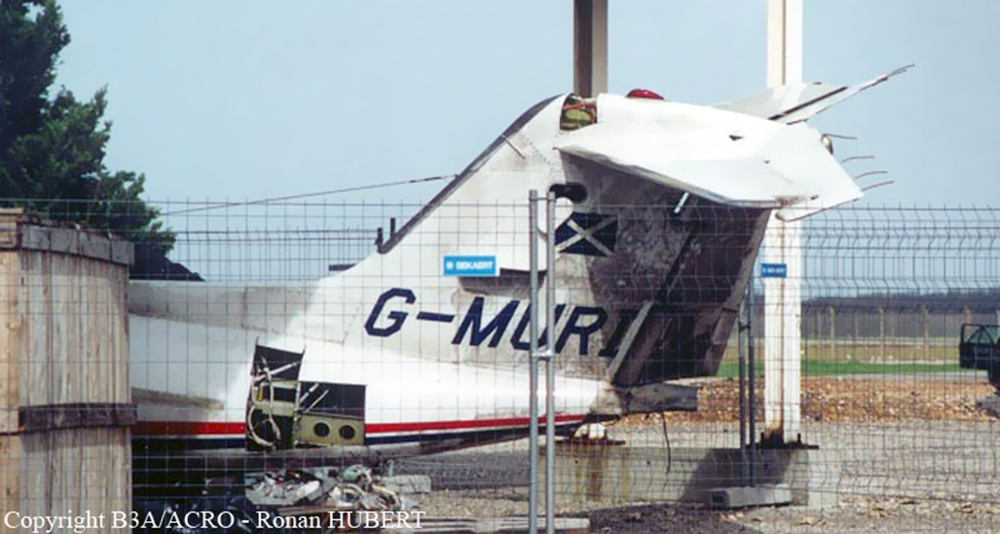
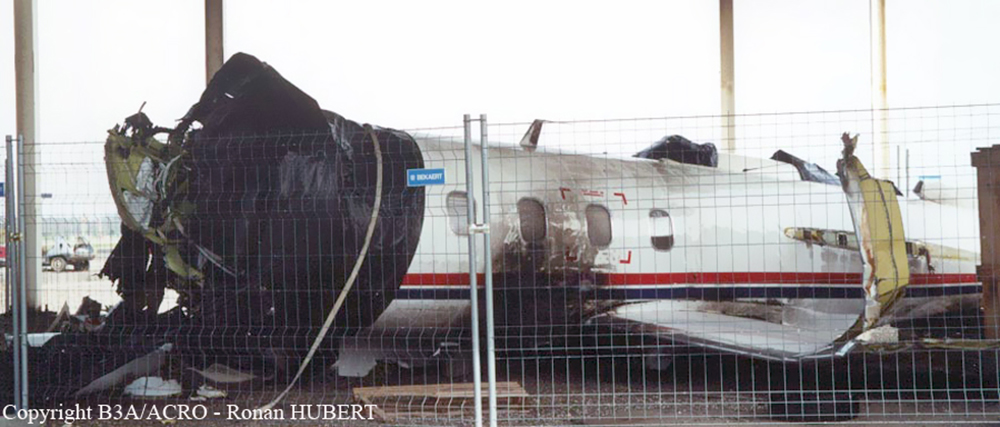
Crash of a Cessna 421C Golden Eagle III off Monaco: 4 killed
Date & Time:
Apr 10, 1998 at 1320 LT
Registration:
D-IALE
Survivors:
Yes
Schedule:
Bad Vöslau - Nice
MSN:
421C-0635
YOM:
1974
Crew on board:
1
Crew fatalities:
Pax on board:
7
Pax fatalities:
Other fatalities:
Total fatalities:
4
Circumstances:
The twin engine aircraft departed Bad Vöslau Airport at 0900LT on a private flight to Nice. While approaching Nice-Côte d'Azur Airport in poor weather conditions, the aircraft suffered a double engine failure. The pilot attempted to ditch the aircraft that crashed one nautical mile off Monaco. Four passengers were killed while four other occupants were rescued, among them the pilot, his wife and daughter. The aircraft sank and its wreckage was found four days later at a depth of 165 metres. At the time of the accident, weather conditions were poor with heavy rain falls and hail.
Probable cause:
Double engine failure due to fuel exhaustion.
Crash of a Douglas DC-6A in Nuremberg: 3 killed
Date & Time:
May 6, 1974 at 2221 LT
Registration:
TF-OAE
Survivors:
No
Schedule:
Nice - Nuremberg
MSN:
44069/396
YOM:
1953
Crew on board:
3
Crew fatalities:
Pax on board:
0
Pax fatalities:
Other fatalities:
Total fatalities:
3
Captain / Total hours on type:
3058.00
Copilot / Total hours on type:
704
Aircraft flight hours:
33271
Circumstances:
On final approach to Nuremberg Airport runway 28 by night, the airplane struck tree tops and crashed in flames in a wooded area located 4 km short of runway. The aircraft was destroyed and all three occupants were killed.
Probable cause:
It is believed that the accident was caused by an excessive accumulation of ice/frost on fuselage during a night approach. However, it was also reported that the captain had a blood alcohol level between 1.21 and 2.5‰ which was considered as a contributing factor.
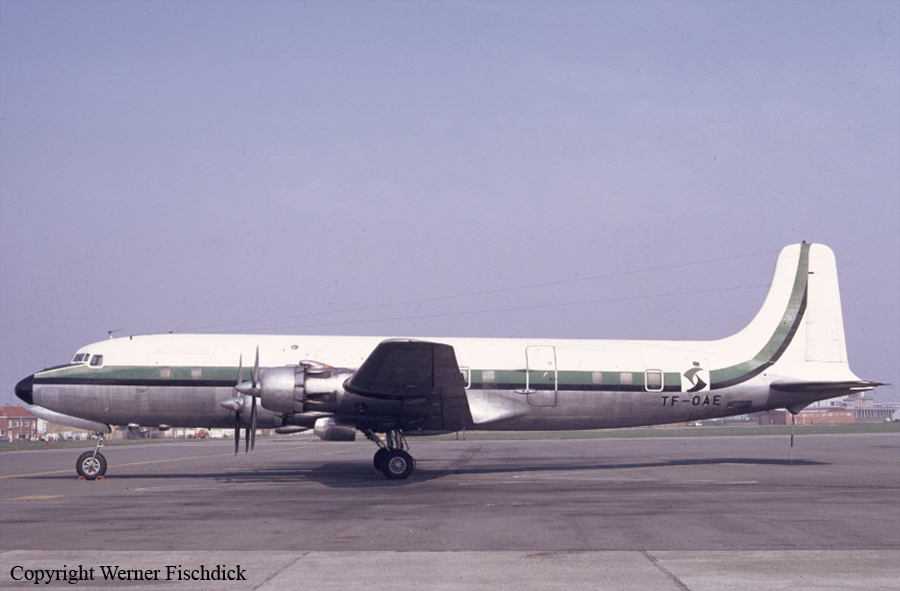
Crash of a Rockwell Grand Commander 680E in Nice: 2 killed
Date & Time:
Feb 28, 1971
Registration:
F-BFRB
Survivors:
No
MSN:
680-631-2
YOM:
1958
Crew on board:
1
Crew fatalities:
Pax on board:
1
Pax fatalities:
Other fatalities:
Total fatalities:
2
Circumstances:
Crashed in unknown circumstances on a fuel depot located in the suburb of Nice. The aircraft was destroyed and both occupants were killed.
Crash of a Sud-Aviation SE-210 Caravelle III off Antibes: 95 killed
Date & Time:
Sep 11, 1968 at 1034 LT
Registration:
F-BOHB
Survivors:
No
Schedule:
Ajaccio - Nice
MSN:
244
YOM:
1968
Flight number:
AF1611
Crew on board:
6
Crew fatalities:
Pax on board:
89
Pax fatalities:
Other fatalities:
Total fatalities:
95
Captain / Total hours on type:
2054.00
Copilot / Total hours on type:
676
Aircraft flight hours:
1001
Aircraft flight cycles:
579
Circumstances:
Following an uneventful flight from Ajaccio, the crew started the descent to Nice-Côte d'Azur Airport when the pilot sent a brief mayday message, saying 'fire on board, request urgent landing'. Few second later, the airplane went into a dive and crashed into the Mediterranean Sea some 40 km off Antibes. Few debris were found on water surface and none of the 95 occupants survived the crash.
Probable cause:
The exact cause of the accident could not be determined with certainty. At the beginning of the investigations, the board of inquiry reported that the following assumptions were not ruled out: pilot error, fire in the cockpit, aircraft shot down by a surface-to-air missile or the rupture of the hydraulic reservoir. Nevertheless, the aircraft totally disintegrated upon impact with the water surface as it was extremely violent, at a considerable speed and with a high rate of descent. It is believed the loss of control was the consequence of a fire that erupted in the rear part of the cabin, by the right lavatory and galley. Maybe the pilot became incapacitated by fumes but this was not confirmed. About 50 years after the accident, the French government may release some classified documents regarding this tragedy, reinforcing the assumption that the aircraft may have been shut down by a surface-to-air missile fired by the French Navy which was completing local exercises in the area at that time. In 2018, the real cause of this accident remains unclear.
Final Report:

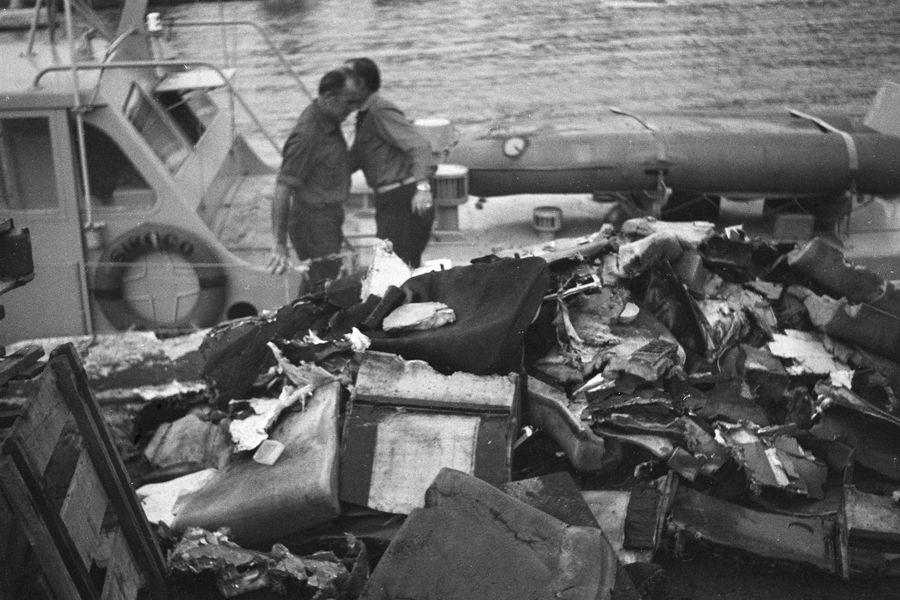
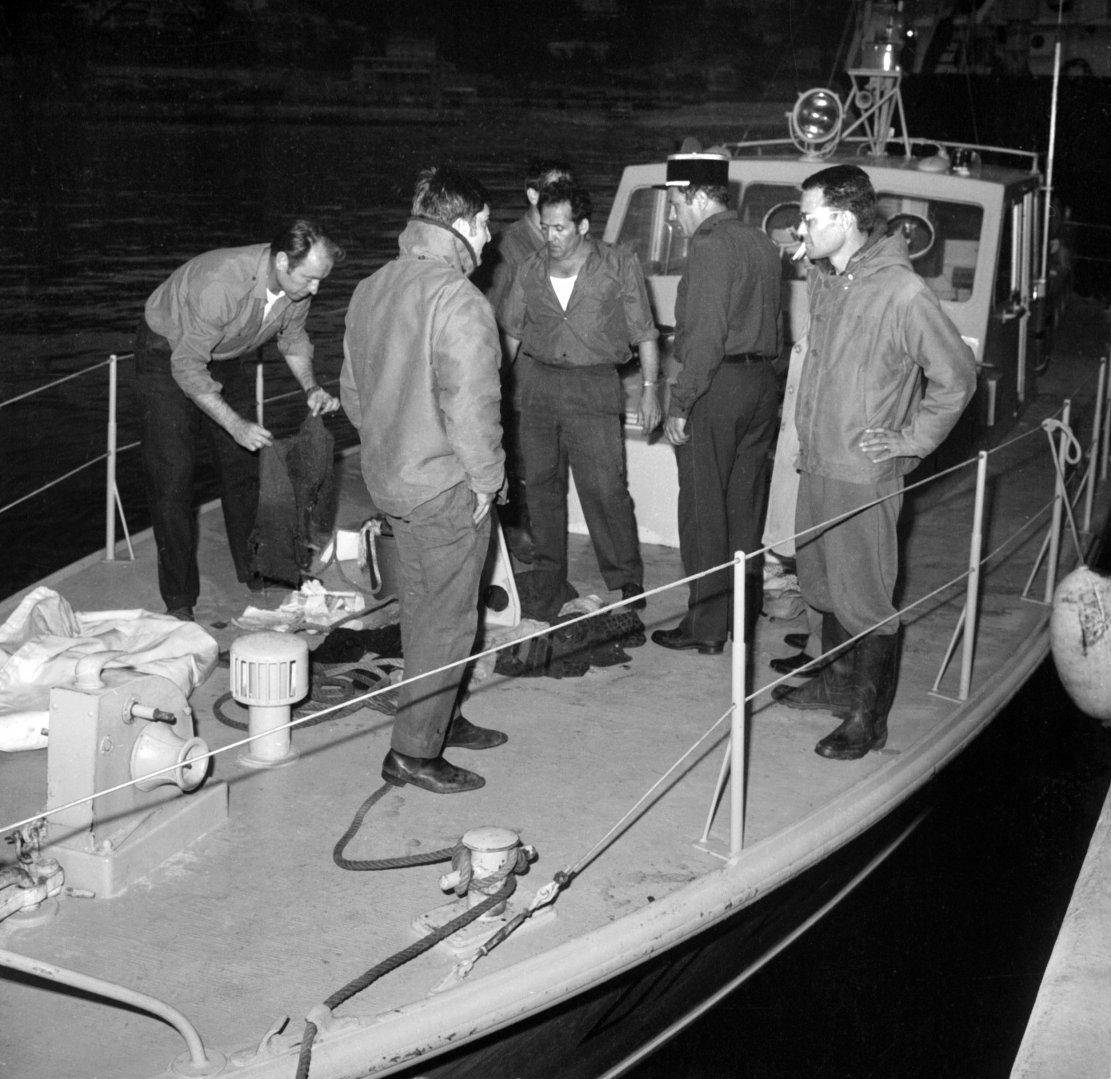
Crash of a Beechcraft King Air A90 near Saluzzo: 6 killed
Date & Time:
Sep 22, 1967 at 0205 LT
Registration:
D-ILNI
Survivors:
No
Schedule:
Frankfurt – Nice
MSN:
LJ-116
YOM:
1966
Crew on board:
2
Crew fatalities:
Pax on board:
4
Pax fatalities:
Other fatalities:
Total fatalities:
6
Circumstances:
The twin engine aircraft was performing a charter flight from Frankfurt to Nice, carrying a crew of two and four passengers, among them the German Industrialist Harald Quandt, owner of BMW. While cruising by night over Italy, the airplane went out of control, dove into the ground and crashed in a mountainous area located southwest of Saluzzo, Piedmont. The aircraft was totally destroyed and all six occupants were killed.
Probable cause:
The exact cause of the accident could not be determined. However, the assumption that the loss of control was caused by the failure of the electric system was not ruled out.
Crash of a Beechcraft C-45B Expeditor near Plumpton: 1 killed
Date & Time:
Jan 18, 1967 at 1440 LT
Registration:
N102S
Survivors:
No
Schedule:
Nice - London-Gatwick
MSN:
6158
YOM:
1944
Crew on board:
1
Crew fatalities:
Pax on board:
0
Pax fatalities:
Other fatalities:
Total fatalities:
1
Captain / Total hours on type:
162.00
Circumstances:
The pilot, sole on board, was completing a ferry flight from Nice to London-Gatwick. While descending to Gatwick Airport in VFR mode, the pilot encountered poor weather conditions with rain falls and turbulences. While flying in clouds, he lost control of the airplane that plunges into the earth and crashed in a field. The aircraft was destroyed and the pilot was killed.
Probable cause:
The aircraft collided with high ground when the pilot was attempting to navigate at low altitude in poor visibility. Turbulent airflow in the lee of a ridge may have been a contributory factor. Investigators did not find any topographic maps for the UK in the aircraft. The pilot probably did not recognise the seriousness of the deteriorating weather situation in southern England until he crossed the coast and had to fly at low altitude to remain in visual contact with the ground.
Final Report:

Crash of a Hawker-Siddeley HS.125-1 off Nice: 2 killed
Date & Time:
Jun 5, 1966 at 1712 LT
Registration:
F-BKMF
Survivors:
No
Schedule:
Cannes - Nice
MSN:
25007
YOM:
1964
Crew on board:
2
Crew fatalities:
Pax on board:
0
Pax fatalities:
Other fatalities:
Total fatalities:
4
Captain / Total hours on type:
324.00
Copilot / Total hours on type:
50
Aircraft flight hours:
798
Circumstances:
The airplane departed Cannes at 1645LT bound for Nice and the crew was supposed to perform three low pass over the Airport of Nice-Côte d'Azur during a local Airshow. The first path was performed at low height over the runway. The crew then completed a turn to the right in an attempt to make a second low pass but on the opposite direction. Doing so, the airplane climbed to an altitude of 2,000 feet when control was lost. It went into a dive, caught fire in the air and crashed in flames into the sea some 1,5 km southwest of the airfield. The aircraft was destroyed and both pilots were killed.
Probable cause:
The stresses applied to the airframe of F-BKMF during the manoeuvre carried out in order to return to the Nice runway, exceeded the design limit loads of the wing unit. A rupture was then caused to the wing unit which resulted in the leakage of a large quantity of fuel from the upper surface near the wing root. The aircraft stalled under the high load factor and the pilot was unable to regain control because of the small height margin and the damage to the aircraft structure. In spite of the considerable stick forces which have to be applied in a normally trimmed aircraft in order to carry out such a manoeuvre, the latter may have been attempted by the pilot, who was experienced, skillful and cautious, in view of the following circumstances: "tight" manoeuvre at low altitude in poor visibility; air display atmosphere (type of flying pre-supposing special training different from the training normally required for a chief pilot of the Air Affaires company); possible anxiety to avoid crossing the flight paths of several aircraft in the vicinity during the display.
Final Report:
Crash of a Learjet 23 in Zurich: 1 killed
Date & Time:
Dec 12, 1965 at 1939 LT
Registration:
D-IHAQ
Survivors:
Yes
Schedule:
Zurich – Nice
MSN:
23-007
YOM:
1965
Crew on board:
2
Crew fatalities:
Pax on board:
7
Pax fatalities:
Other fatalities:
Total fatalities:
1
Captain / Total hours on type:
121.00
Copilot / Total hours on type:
49
Circumstances:
The airplane, owned by the German Industrialist Harald Quandt, was en route from Zurich to Nice. During the takeoff roll on runway 28 at Zurich-Kloten Airport, while at a speed of 132 knots, the captain realized that the rotation was impossible and decided to abort the takeoff procedure. Unable to stop within the remaining distance (runway 28 is 2,500 meters long), the airplane overran at a speed of 80-100 knots, went through the perimeter fence and came to rest on a road. All seven passengers were unhurt while the captain was injured. The copilot was seriously wounded and died from his injuries while being transferred to a local hospital. At the time of the accident, runway 28 was wet due to recent rain falls.
Probable cause:
It was determined that at the time of the accident, the total weight of the aircraft was 5,935 kg, about 250 kg above the MTOW. It was also reported that the crew failed to prepare the flight properly and that a lack of coordination was considered as a contributing factor.
